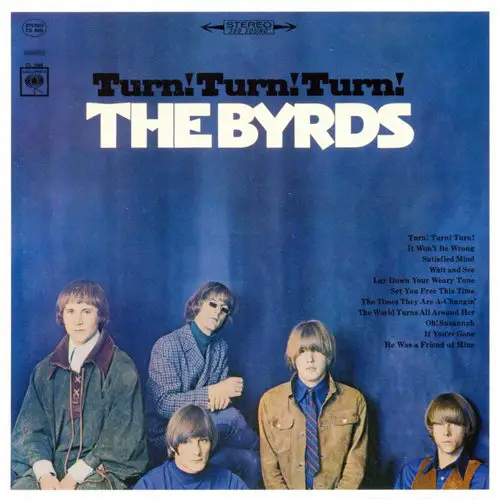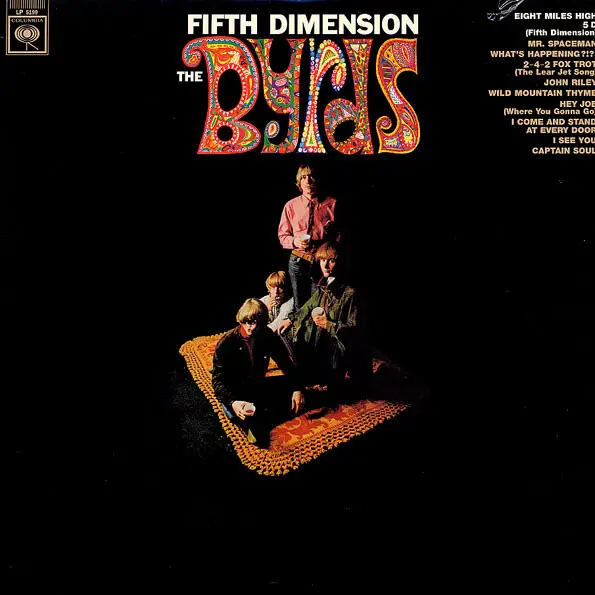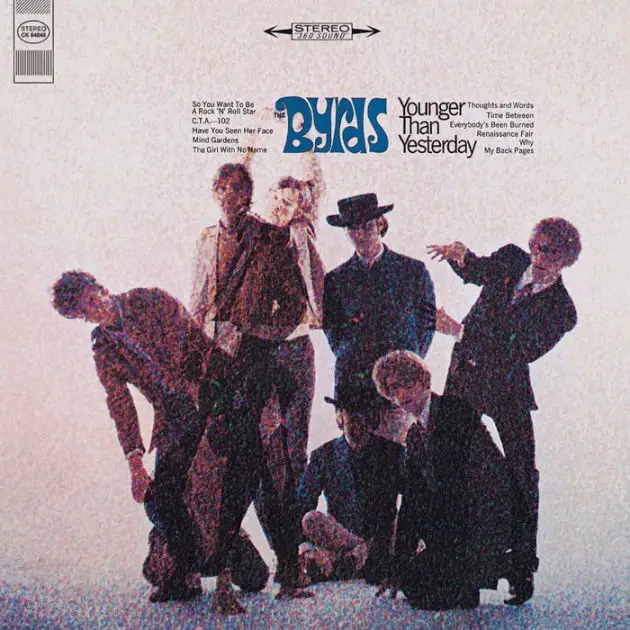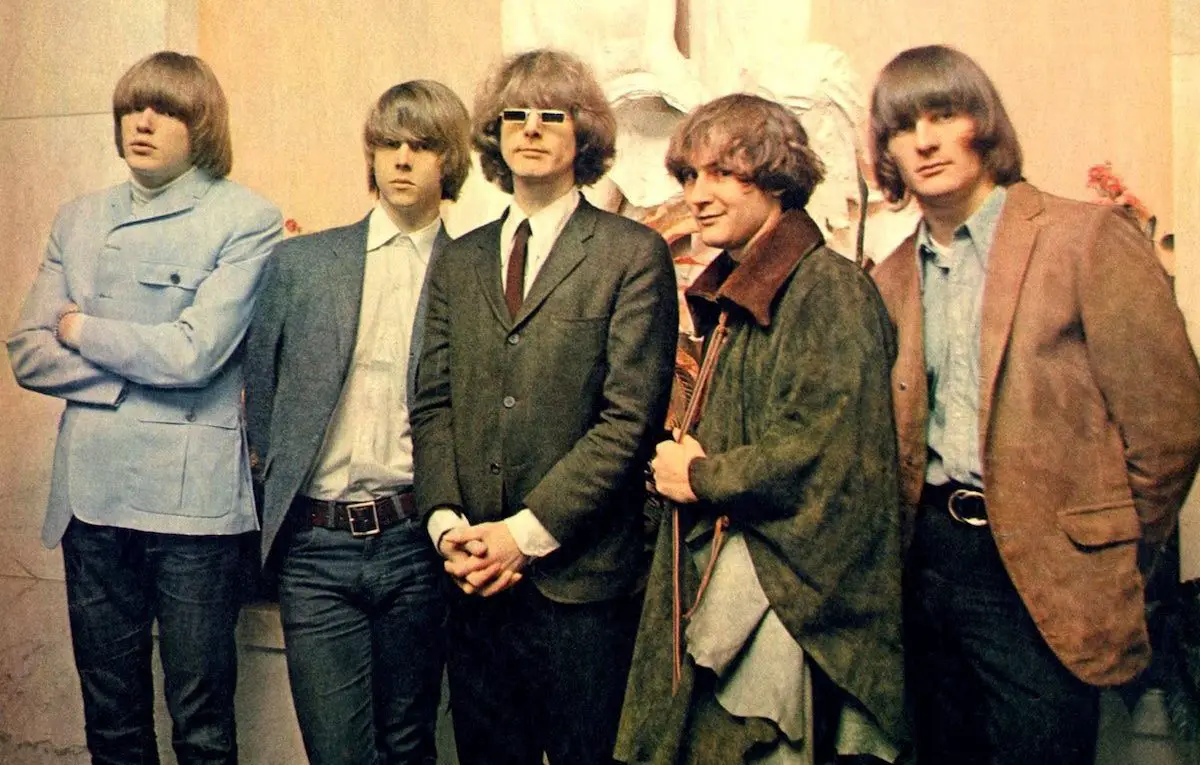The Byrds Albums Ranked
The Byrds /bɜːrdz/was an American rock band formed in Los Angeles, California in 1964. The band underwent multiple lineup changes throughout its existence, with frontman Roger McGuinn (known as Jim McGuinn until mid-1967) remaining the sole consistent member. Although they only managed to attain the huge commercial success of contemporaries like the Beatles, the Beach Boys, and The Rolling Stones for a short period in the mid-1960s, the Byrds are today considered by critics to be nearly as influential as those bands. Their signature blend of clear harmony singing and McGuinn’s jangly twelve-string Rickenbacker guitar was “absorbed into the vocabulary of rock” and has continued to be influential.
Several former members of the band went on to successful careers of their own, either as solo artists or as members of such groups as Crosby, Stills, Nash & Young, the Flying Burrito Brothers, and the Desert Rose Band. In 1991, the Byrds were inducted into the Rock and Roll Hall of Fame, an occasion that saw the five original members performing together for the last time. Gene Clark died of a heart attack later that year, while Michael Clarke died of liver failure in 1993.[ McGuinn, Crosby, and Hillman remain active. Here are all of The Byrds albums ranked.
Don’t miss out on the TIMELESS The Byrds music below! Click to experience the evolution of their musical style!
10. Dr. Byrds And Mr Hyde (1969)

“After the departure of Gram Parsons and Chris Hillman and with the addition of John York, Clarence White and Gene Parson, Mcguinn had a whole new version of the Byrds which was a great live band and a whole new vehicle for McGuinn’s songs and collaborations. The jangle of the original Byrds was augmented by White’s Telecaster and they took on a new sound. There was still a little country there also. Clarence’s Telecaster playing influence almost every country player to the day. For me this was an exciting album that was never far from my turntable. And it brought back some fans that got lost with SOTR.”
9. The Byrds’ Greatest Hits (1967)

“After half a century, The Byrds continue to influence popular music. CD provides a nice glimpse into the past, in early stereo, complete with tambourines. Surprisingly, “Turn! Turn! Turn! (To Everything There Is A Season)” was mono. Remainder, including memorable hits lacked bass, immediacy and realism but overall, recommended.”
8. (Untitled) (1970)

“This is the byrds, live, at their best, filial recordings of musical craftsmanship, stagecraft, showmanship, creativity, a showcase for pop shows at the lip of becoming stadium rock and expanding like helium balloons until they explode in excess and pop settles back into lip synch and studio electronica that gives few hints of what preceded — a something that will sometimes cause younger people, eying an old fart, to assert (even if tentatively), “you guys had the best music.” the byrds weren’t the only ones, but they were central to it.”
See more: Canned Heat Albums Ranked
7. Ballad Of Easy Rider (1969)

“This record was constantly playing in my Volkswagon when I was a teenager & it sounds even better today as a reminder of what great music is all about! THE BYRDS at their country-rock peak with Clarence White on his magical guitar deliver an album of such quality it must be hard to believe. The Hippie-Country element of it is not sloppy at all, in fact, it is so precise in its production & performance it is shocking & representative of their ability to conjure up what lots of folks were feeling at the time. McGuinn is in grand style here & with the power of the movie’s popularity really drives home the Americana factor on this record to the max. “Deportee” , “Oil In My Lamp”, “Ballad Of Easy Rider” & all the songs on here just make you feel good when you listen to them. “
6. Turn! Turn! Turn! (1965)

“The opening track is one of the band’s most famous songs: a cover of Peter Seeger’s “Turn! Turn! Turn!”. The guitars are jangly and wonderful, and the vocals convey the meaning of the song perfectly, singing with the voice of communion and reason (as mentioned in the album’s back-cover notes). The second track “It Won’t Be Wrong” is rather melodically clumsy, but is salvaged by its fine 12-string guitar line. Then we come to the first of two great Gene Clark’s contributions to the album: “Set You Free This Time”. His pained, melancholy, and somewhat timorous singing perfectly befits the song: the way he rushes through the opening parts of the verses, only to slow down and emphasize their ending, is unique to the Byrds’ hitherto vocal approach.”
5. Fifth Dimension (1966)

“The album is a classic, that is most certain. This 1996 remaster, for me, was quite the revelation. There’s always going to be limitations in the sonic quality of these recordings, given the recording technology that was being used at the time. But for me, having been grooving on some of these songs for years, upon listening to this remaster I heard parts that had been obscured before. The guitar parts have much better clarity now, as do the vocal harmonies. This is a vast improvement.”
See more: Steely Dan Albums Ranked
4. Mr. Tambourine Man (1965)

“The Byrds heavily covered tracks which were written by Bob Dylan throughout their recording career (in which they were able to bring their own special brand of harmony to one of the greatest song writing talents of all time), and four of them appear on here, including ‘Mr. Tambourine Man’, which both the British and American public took to the top of the charts, and the follow-up single: ‘All I Really Want to Do’, which peaked at no.4. It’s success was made all the more respectable when you consider that it was having to compete against another version by an up and coming girl singer known as Cher.”
3. Sweetheart Of The Rodeo (1968)

“Chris Hillman once said: The Byrds invented country rock, the Flying Burrito Brothers perfected it, and the Eagles took it to the bank. …I like to name the Byrds And Miles Davis in the same sentence. I do it like this; no one spearheaded more styles of music than Miles Davis and the Byrds did. The Byrds were on the ground floor of folk rock, psychedelia, raga rock, power pop, country rock… Miles either singlehandedly invented or helped to spearhead…. You get the idea. I’ll spare the history lesson. Terrific 180 gram pressing.”
2. Younger Than Yesterday (1967)

“Although one of their main songwriters had left (Gene Clark), the group’s other members had no problems with delivering a classic set of (mostly) original songs. Apart from the fantastic So You Want To Be A Rock ‘n’ Roll Star, Crosby delivers two of his finest (Renaissance Fair and Everybody’s Been Burned) and Hillman emerges as an equal with Have You Seen Her Face. The rest of the package keeps a very high standard; if it wasn’t for a few small excesses, typical of the time, I would call this album perfect. It should be the first Byrds album bought after a Greatest Hits.”
1. The Notorious Byrd Brothers (1968)

“Might I say that this is the best Byrds album? In my opinion at least… The combination of pop, rock, psychedelic and country is just beautiful. Whenever I go camping, this album will be playing. It’s happy, it’s mysterious and its natural just like the song Natural Harmony. Gorgeous, brilliant album. This is where the Byrds really hit their peak in songwriting and experimentation.”

